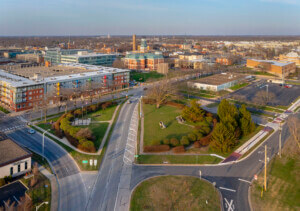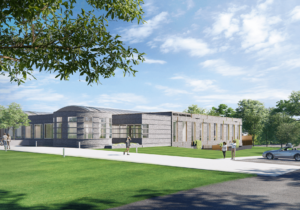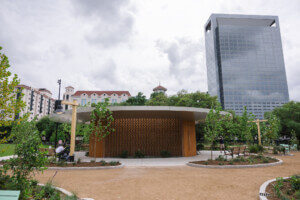Above the start of Grassy Branch of Cool Creek in the small city of Westfield, Indiana, a wooden boardwalk snakes through a renaturalized streambed where pedestrians can hop over the stream or get their feet wet in the flowing water. Nearby, the new park, the Grand Junction Park & Plaza, accommodates dedicated spaces for open-air performances; a glass-walled cafe with a cascading, stepped Indiana limestone facade; and a Great Lawn for lounging. Park users can picnic and play, ice-skate in the winter, or enjoy the many comfortable wooden benches from which they can peacefully observe the resurgence of wildlife.
“The water life has dramatically improved,” Melody Jones, director of parks and recreation during the development process, told AN. She also lives across from the park. “You would see minnows, but we never saw fish. The way it’s designed with these weirs, there are these pools. We see fish that are four to six inches long. It’s like, ‘Holy cow, there’s fish!’ The thing I love the most is the waterfowl and birds of prey that are back—heron and red-tailed hawks.”
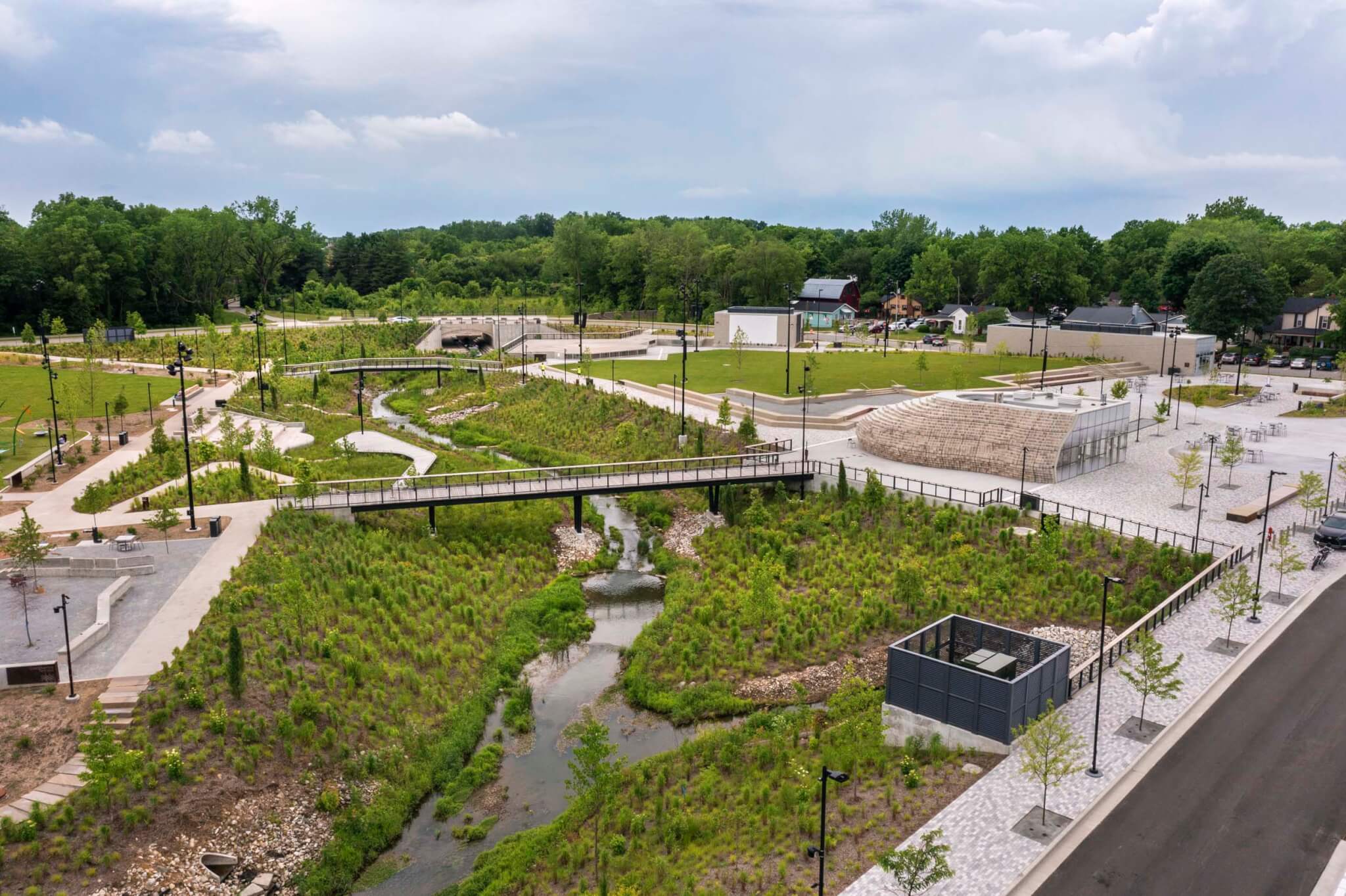
The park, which officially opened last year, was designed by David Rubin of Land Collective with architecture by Matthias Hollwich of HWKN in collaboration with RATIO Architects and signage and wayfinding by Bruce Mau Design, along with an extended team of civil engineers and riparian-corridor specialists. While the end result is impressive, the effort began as a more limited project focused on flood control.
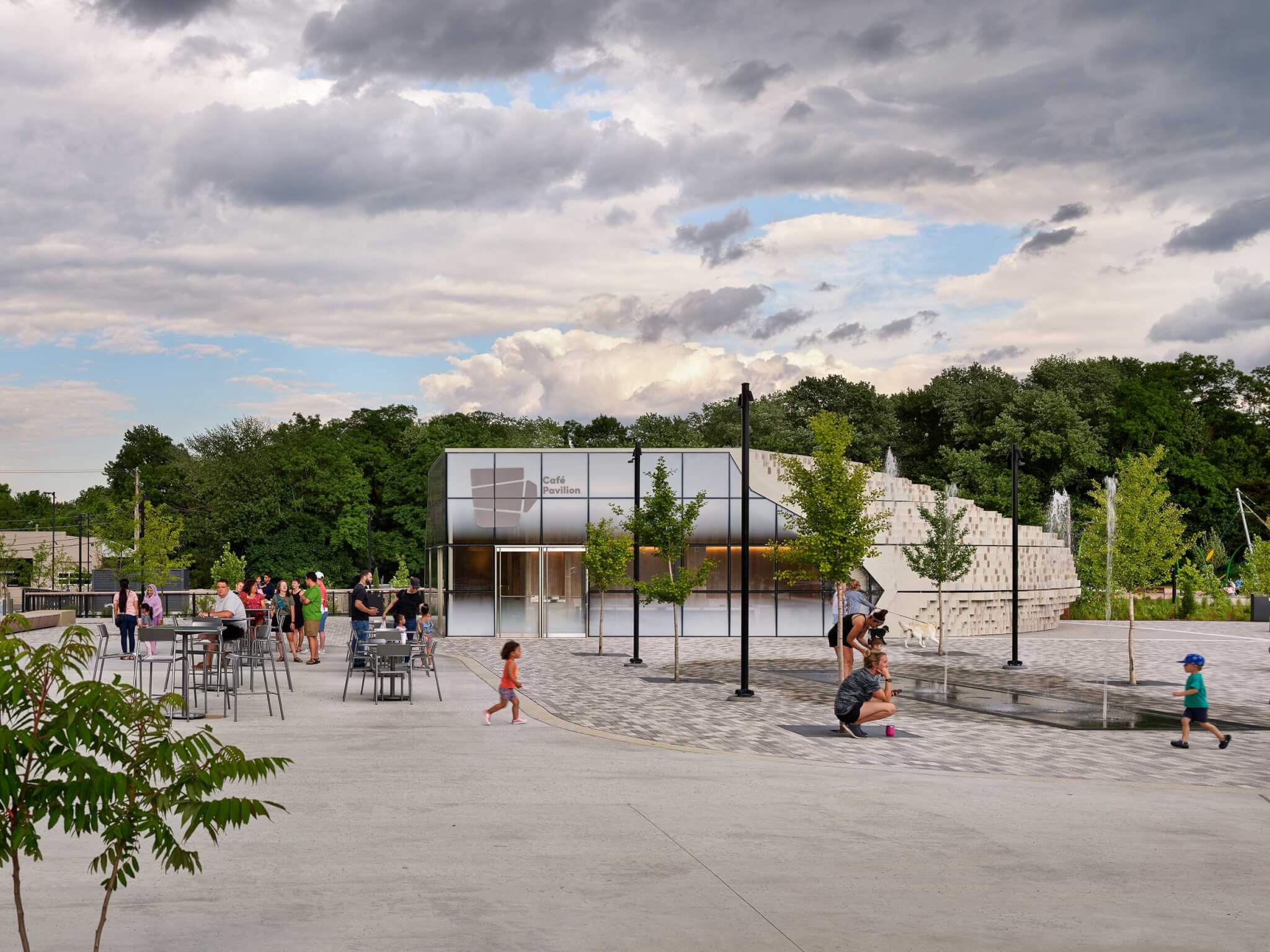
“All of these assets became possible because there was a social overlay to infrastructure,” Rubin said. “It was that marriage that made this all possible. We came up with this vision for the park that resolved the climate crisis issues and the riparian-corridor reparation issues that then had this social overlay that would create a new central park around which development could happen.” The creek at the downtown crossroads of Westfield had overflowed throughout its history. After the Swamp and Overflowed Lands Act of 1850, the Army Corps of Engineers fixed the problem in the rough- and-tumble way of early American settlements: It channelized Cool Creek to keep water from destroying productive farmlands, inserting a pipe through which the normal flow of water could pass. But in the last 20 years, regular 100-year storms began to repeatedly overtop the levee, overwhelming the pipe and flooding the area.
In 2013, a competitive bidding process had arrived at two potential landscape architects. Then Ken Alexander, the director of public works at that time, suggested bringing in David Rubin of Land Collective to share some ideas. Mayor Andy Cook expressed skepticism about choosing a new team so late in the process, but Rubin’s ideas resonated with local constituents. They talked more about the aims of the project and the values the community wanted to embody instead of showing design precedents. Then yet another flood, this one a 500-year storm, inundated the area.
Rubin and his colleagues won the bid, eventually designing the park around renaturalization of the creek. Their scheme inserted J-hooks—curved portions that slow the movement of rushing water during storm events—proposed a series of cultural facilities throughout upland sections, and connected the grounds to the town center and neighboring trails.
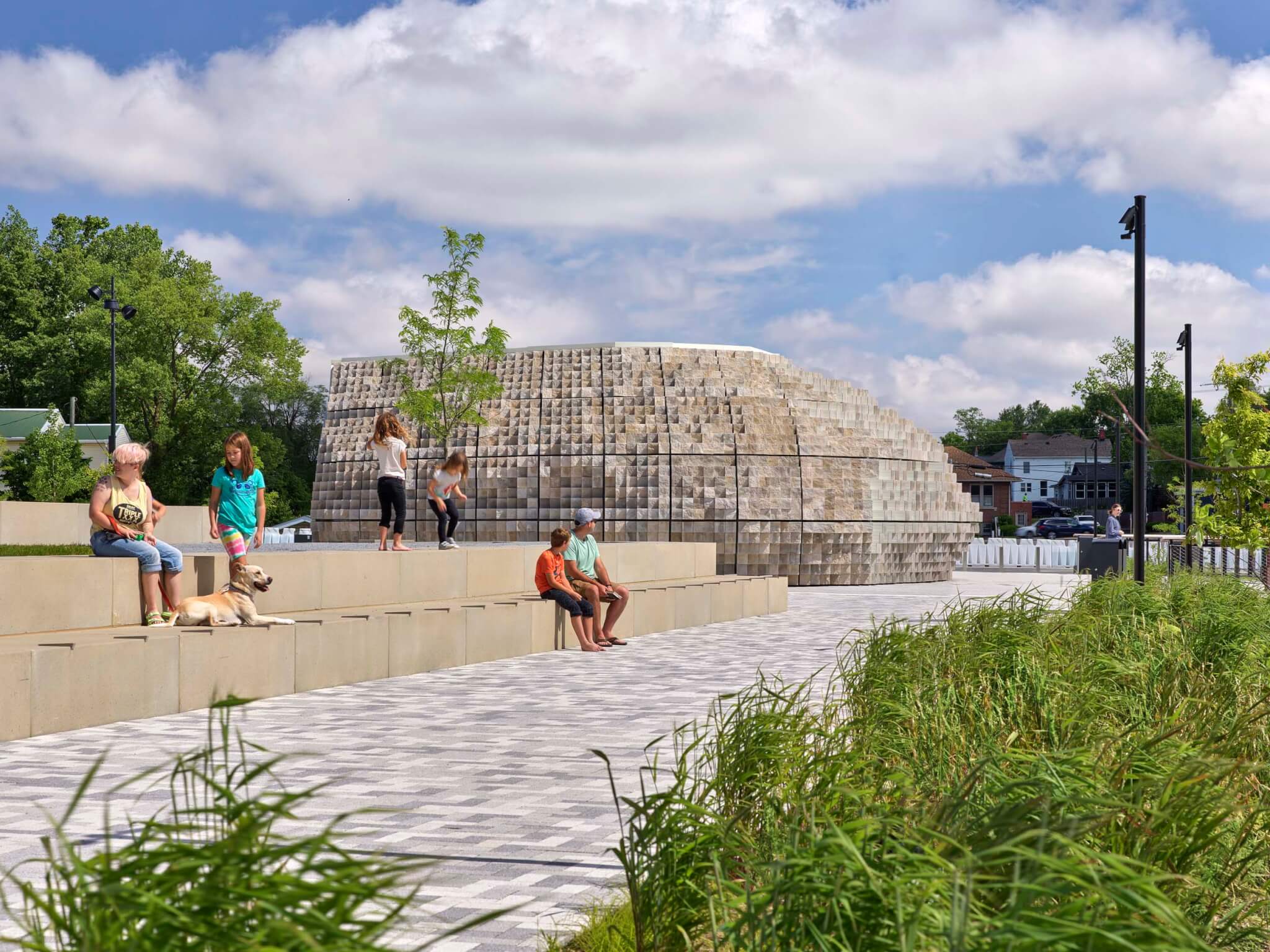
“The other concepts did not include the renaturalization of the stream that runs through the park,” Jeremy Lollar, director of public works during construction, remembered. “David did a nice job of incorporating the natural element of what the stream originally was, returning it to what it was back in the 1800s. Then they did a really nice job of connecting both halves of the park to pedestrian facilities, and the building architecture was pretty unique as well.”
A small town 20 miles north of downtown Indianapolis, Westfield had a reference to precedents for great architecture with a capital A: the modern-design mecca of Columbus about 60 miles south. Now the city is fundraising for three other planned pavilions by HWKN, including one that has attracted the attention of the Indiana Symphony Orchestra for possible use as a venue.
HWKN contributed a cafe sculpted to have a rocklike appearance. “The architecture creates a dialogue between the artificial geometries of humanity and the beauty of nature that is the broken edge that appears throughout our design,” Hollwich offered.
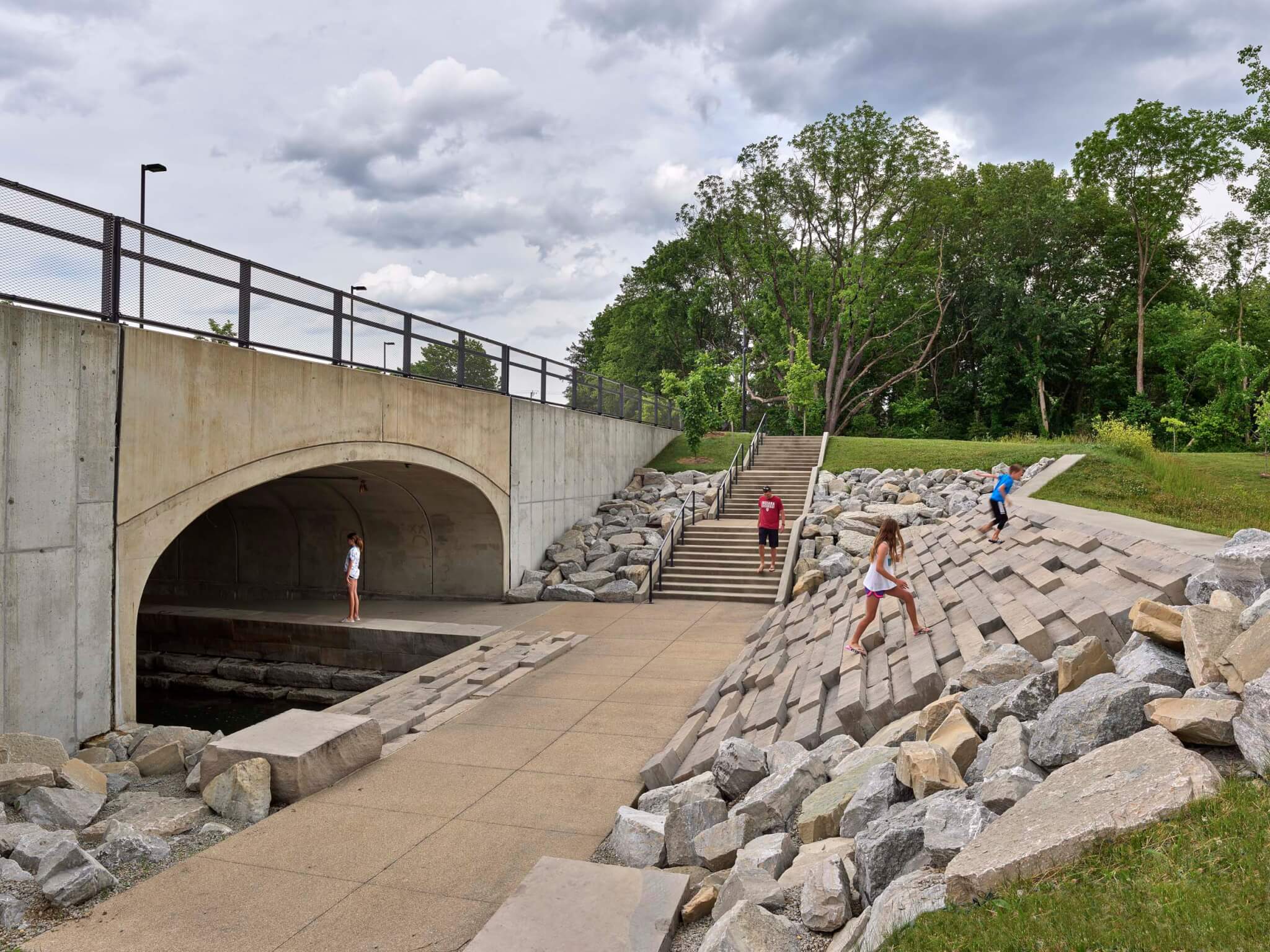
“The best part is that every one of these pavilions is filled with program, because that’s what we really want to do,” he continued. “We want to create places for people to come together, enjoy each other, meet new people, because that, we believe, is the power of architecture. We can create places and invite people to experience each other, nature, and the architecture around it.”
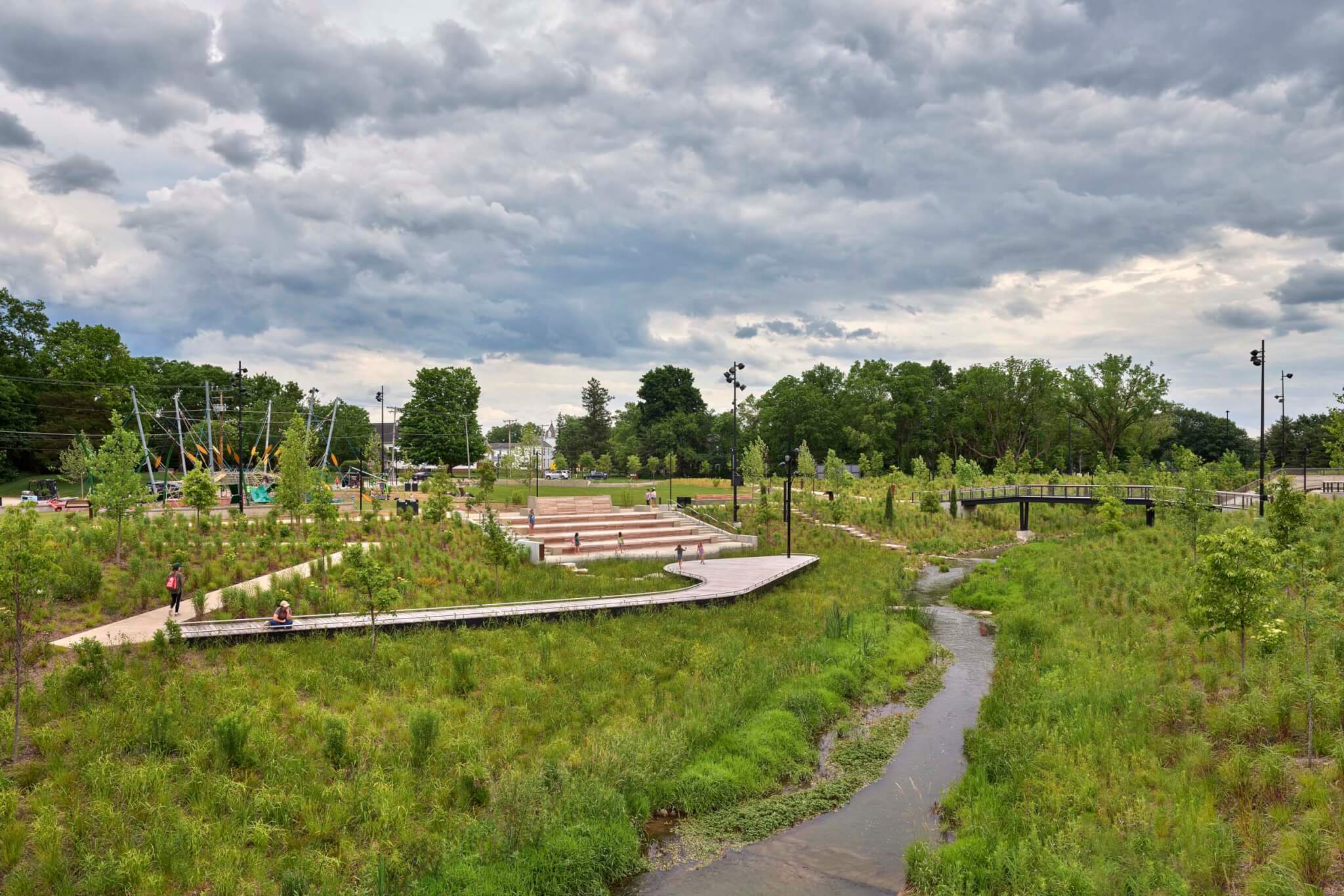
A 100-year storm event has not happened since completion of the park, but the levee has already filled with water from large storm events, preventing flooding and damage. Meanwhile, though development from Indianapolis is gradually encroaching on Westfield, nonhuman residents have quickly made the creek their home. “The wildlife has taken a big hit, so it’s great to be able to put these oases in urban settings where there are animals that can maintain a habitat and survive,” Jones said. “We have foxes in downtown now. We’ve had coyotes. … Most neighbors don’t like that.”
Stephen Zacks is a journalist and project organizer based in New York City.








